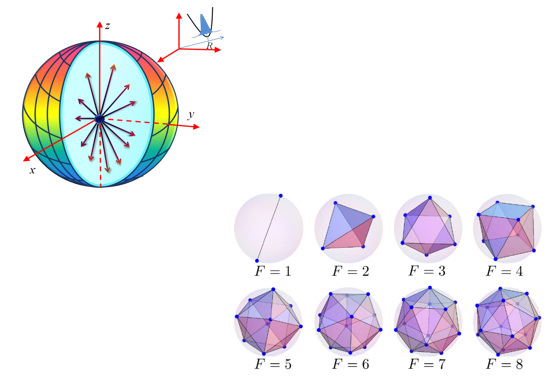Researchers from Key Lab of Quantum Information (CAS) at University and Science of Technology of China have proposed a new routine to manipulate a synthetic magnetic monopole field in real space with spinful atoms, which enables the implementation of Quantum Hall physics on a curved spherical geometry. The work is done in collaboration with scholars from Rice university, UCSD, and CAS, and now has been published in Physical Review Letters on 29 March, 2018 [Phys. Rev. Lett. 120, 130402 (2018)] .
How to simulate effective gauge fields of neutral atoms, and realize the celebrated quantum hall physics for both bosons and fermions remains a problem in the cold atom community. Theoretically exact quantum hall physics becomes dominate when the confining trap is fast rotated. However, the centrifugal force counteract the effect of the trapping potential, leading to the expansion of the atomic cloud with confinement. Therefore, quantum hall effect is hard to observe in this simple setting.
To overcome this difficulty, Prof. Zheng-Wei Zhou proposed a novel way to implement quantum hall physics using neutral atoms. They implement a synthetic magnetic monopole fields with large internal spin atoms, and after introducing a conventional harmonic trap potential, these atoms can be confined on a curved spherical surface. They proved that this model is exactly mapped to a magnetic-monopole system on sphere, which provides an ideal platform of investigating fractional quantum hall physics, as pointed out by Nobel Prize winners F.D.M. Haldane in 1983.

Left: Spherical surface trap using synthetic monopole fields. R is the radius of the sphere.Right: Vortex patterns on sphere of Bose-Einstein condensation on Haldane surfac for different internal spin F. These patterns can be exactly described by the solutions the classical Thomson’s problem for 2F electrons on sphere. Here the cores of vortices are represented by blue dots.(Image by ZHOU Xiangfa)
The system is the first method reported to make the construction of Haldane spherical surface possible using current technique. It not only enables the direct comparison between experiments and theoretical predictions, but also opens up the possibility of searching for novel quantum phases related to magnetic monopoles.
The work is supported by National Natural Science Foundation of China, The Chinese Academy of Sciences and Synergetic Innovation Center of Quantum Information and Quantum Physics.
Provided by CAS Key Laboratory of Quantum Information, USTC
Edited by Guo Jianjian